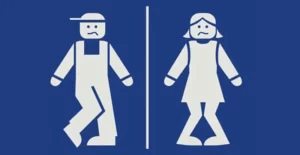Steven Soifer, PhD
ABSTRACT. The community organizing literature, in general, and the social work literature, in particular, contain many examples of urban-based community organization practice but little about rurally based community organization practice. By providing a case example of rural-based community organizing practice in Vermont, which combines several different community organizing models, this paper addresses the imbalance. The success of this statewide tenant organizing effort can yield important lessons for rural community practitioners. [Article copies available for a fee from The Haworth Document Delivery Service: 1-800-342-9678. E-mail address: getinfo@haworthpressinc.com]
INTRODUCTION AND LITERATURE REVIEW
In a 1995 Social Work editorial, Coulton argues that there has been little research on communities and that the social work profession’s knowledge base in this area is weak. This is especially true regarding the profession’s knowledge base of rural communities. While literature about urban community organization practice abounds (Alinsky 1969, 1971; Biklen, 1983; Boyte 1980, 1984, 1989; Burghardt, 1982; Delgado, 1994, etc); there is little recent literature about rurally based community organization practice or that significantly mentions it (Betten & Austin, 1990; Casper & Wellstone, 1981; Delgado, 1986; Kahn, 1970 & 1991; Martinez-Brawley, 1993; Morrison, 1976; Weil and Gamble, 1995, and Wellstone, 1978).
This paper addresses the rural imbalance in particular, and the problem of insufficient research in community practice in general by presenting a case example of a rurally based community organizing
Steven Soifer is an Associate Professor at, the School of Social Work, University of Maryland at Baltimore, 525 West Redwood Street, Baltimore, MD 21201.
Journal of Community Practice, Vol. 5(3) 1998
© 1998 by The Haworth Press, Inc. All rights reserved.
Page 1
| JOURNAL OF COMMUNITY PRACTICE |
effort in Vermont, the most rural state in America. While there appear to be few significant empirical differences between rural and urban social work practice roles (York, Denton, & Moran, 1993), the author’s experiences suggest that actual differences between urban and rural communities do exist. Socio-cultural, economic, and political differences between urban and rural areas are present. To be effective a rural social work practitioner must recognize and spend time learning about these differences.
BACKGROUND INFORMATION
Based on 1990 census data, 10.7% of Vermont’s 562,758 people live in poverty, or 60,857 Vermont residents. Many low-income residents pay a high percentage of their incomes for substandard or overcrowded housing. A recent study by the National Low Income Housing Information Service (LIHIS) found that Vermont ranks third worst in affordable housing among all states and the District of Columbia. The majority of the state’s 65,282 rental households cannot afford the prevailing rents: 51% cannot afford a one-bedroom apartment, while 60% cannot afford a two-bedroom apartment (Vermont Department of Housing and Community Affairs, 1994).
In search of affordable housing, about 10% of Vermonters live in mobile home parks; most of them own their mobile homes and rent a lot for their home. There are 221 known mobile home parks with five or more lots and a total of 18,664 mobile homes, however, not only are many of these parks becoming unaffordable for their low- to moderate-income residents, but there are few open lots in the state, making relocation very difficult (Vermont Department of Housing and Community Affairs, 1994),
Given these conditions, low- to moderate-income renters and mobile-home park residents face numerous problems. First and foremost is the high level of fear and intimidation felt by renters in relation to their landlords. Even though Vermont state law grants tenants the right to organize and become a part of a tenants” association, many renters are afraid to do so for fear of eviction. While landlords are prohibited from engaging in retaliatory evictions (tenants can recover damages if they do), few tenants are aware of this fact. Unfortunately, Vermont tenants (with the exception of those living in federally subsidized units and those living in mobile home parks) are subject to “no-cause” evictions with proper notice, so once a lease expires, a landlord can evict a tenant for any reason.
Because of this climate of intimidation and powerlessness, thousands of tenants are living in unacceptable conditions and are not speaking up about them. From different surveys, tenants report that local problems include apartment units that are not
Page 2
| Steven Soifer |
up to minimum housing codes, very high electric heating bills, failing septic systems, poor water quality, illegal electrical wiring, no playgrounds for children or community centers for adults, mold and/or insect problems, and harassment of tenants by management,
Furthermore, tenants throughout the state experience a host of additional housing-related problems. For example, many tenants do not get their security deposits back; most tenants do not receive interest on their security deposits; the state’s rental housing codes are not properly enforced; lot rents are rapidly escalating in mobile home parks; and risk of lead paint poisoning is common in many of Yermont’s older houses.
FORMATION OF TENANTS UNITED FOR FAIRNESS
(TUFF-VERMONT)
One effective way to begin improving the poor living conditions of Vermont tenants is to create focal tenant associations that can eventually join a statewide organization. In local tenant associations, residents can work together to address their concerns and make positive changes in their environments. With a base of local tenant associations, larger city, county, and statewide tenant coalitions could become an effective tenants’ voice in local and statewide housing planning and policy-making decisions.
In May 1993, a new statewide tenants” organization called Tenants United For Fairness (TUFF)-Vermont was launched. TUFF was an outgrowth of the Central Vermont Tenants Organization (CVTOQ), a regional tenant organizing project of the Central Vermont Community Action Council, a community action agency. TUFF is comprised of low- to moderate-income tenants (defined as at or below 70% of the state’s median family income of $34,780). TUFF’s primary goal is to empower Vermont tenants to bring about qualitative improvements in their living conditions on a local, regional, and state level. They accomplish this by forming local tenant associations in low-income housing projects and mobile home parks. The methods used to achieve this objective include grassroots organizing, developing indigenous tenant group leaders, educating tenants about their rights under Vermont law, and mobilizing tenants to advocate for fundamental changes in state law concerning tenant-landlord issues.
In September 1993, in conjunction with several other existing tenant networks, TUFF sponsored the first statewide tenants’ conference in Vermont. About 50 Vermont tenants participated in various leadership development workshops and heard Vermont’s socialist Congressman Bernie Sanders discuss issues affecting low- to moderate-income housing (Del-core, 1993). By August 1995, TUFF had developed core, 1993). By August 1995,
Page 3
| JOURNAL OF COMMUNITY PRACTICE |
TUFF had developed into a network of 23 tenant associations representing over 750 Vermont renters living in mobile home parks, federally subsidized housing projects, or low-income sections of town in communities such as Barre (population 9,400), Bradford (population 700), Burlington (population 39,000), Montpelier {population 8,200), Northfield (population 1,900), Springfield (population 4,200), and Stowe (population 450). Tenant groups ranged in size from six to fifty members.
During its short existence, TUFF’s local groups have won many tangible housing improvements for their members such as a playground, improvements in a park-wide community center, locks on the laundry room facilities, new lighting systems, public pay phones, deadbolt locks on apartment doors, speed limit signs and “Children at Play” signs, and clean-up of a parked dump. Other tangible accomplishments include the dismissal of an on-site manager who sexually harassed female tenants, increased police surveillance, rebates on utility overcharges (several hundred dollars per tenant), repainting of crosswalks, and conversion of an apartment complex from electric to fuel heat, which brought apartments into compliance with federal housing code standards. With the help of Vermont Legal Aid, one tenant group has filed a lawsuit against their landlord for illegal rent increases. Finally, TUFF won a charter change in one municipality that requires landlords to pay interest on tenants’ security deposits and establishes a Housing Board of Review to hear tenant-land-lord security deposit disputes. A newspaper reporter acknowledged TUFF’s efforts; “Tenants of mobile home parks and low-income housing projects are uniting throughout Vermont to improve living conditions” (Zentz, 1993, p. 3B).
TUFF’s 23-person Board of Directors consists of the president or a designated representative from each of its focally affiliated groups, The board meets monthly and is responsible for all of the group’s financial, policy, and hiring decisions. Tenants United for Fairness-Vermont, Inc. is incorporated as a non-profit corporation under Vermont state law and has its 501(c)(3) tax status from the Internal Revenue Service.
ORGANIZING METHODS AND ORGANIZERS’ ROLE
TUFF’s local tenant associations were organized using a modified version of the Association of Community Organizations for Reform Now (ACORN) community organizing model, originally developed by Wade Rathke in Arkansas and discussed at length by Delgado (1986). The ACORN organizing model itself blends Ross’s house meeting approach to community organizing (Delgado, 1994) community organizing
Page 4
| Steven Soifer |
(Delgado, 1994) (which was successfully used in organizing the Community Service Organization [CSO] in California in the 1940s) and the so-called “Boston” mode of community organizing developed by the National Welfare Rights Organization (NWRO) in the 1960s (Fisher, 1994; Bailis, 1974). Following is a description of TUFF’s tenant organizing model, specifically designed and adapted to work in a rural state like Vermont (Soifer, 1993), TUFF chose this model because ACORN has successfully adopted it in some of its rural statewide organizing efforts.
TUFF’s organizing model likened the role of the organizer to a clock gear that keeps everything running smoothly and on time. As Haggstrom (1995) puts it: “People are usually immersed in private lives centered about work and home. The organizer pulls and jolts them into the public arena’ (p. 342). Ernie Cortez, an outstanding Industrial Areas Foundation (IAF) organizer, has said about the organizer’s role (Rogers, 1990):
Organizing is a fancy word for relationship building. No organizer ever organizes a community. What an organizer does is identify, test out, and develop leadership. And the leadership builds the relationships and the networks and following that does the organizing.
If I want to organize you, I won’t sell you an idea. What I do, if I’m smart, is try to find out what’s your interest. What are your dreams? I try to kindle your imagination, stir the possibilities, and then propose some ways in which you can act on those dreams act on those values, and act on your own visions. You’ve got to be the owner, Otherwise, it’s my cause, my organization. You’ve got nothing! (p. 17)
The skills of an organizer include relationship building, action research, identifying and developing leadership, networking, helping to facilitate meetings, planning and strategizing, and action planning. However, the Iron Rule of Organizing says that the organizer should “Never, ever, do for people what they can do for themselves” {Rogers, 1990, p. 15).
METHODS APPLICATION TO RURAL VERMONT
Choosing Where to Organize
In deciding where to organize, Warren and Warren (1984) provide a guide for assessing conditions in a geographical area (or in this case, a rental housing complex) that gives the organizer a sense of the possibilities of building a successful tenants’ organization.
Page 5
| JOURNAL OF COMMUNITY PRACTICE |
In Vermont, there are several sources for locating potential housing complexes to organize. For low-income, federally subsidized housing projects, there is the Directory of Subsidized Rental Housing in Vermont (1992), and for mobile home parks, there is the Directory of Mobile Home Parks in Vermont (1993),
The city tax assessor’s or town clerk’s office has a list of a town’s large landlords (and, incidentally, where renter populations are concentrated). The “grand fist” is an alphabetical list of all property holders, including their property holdings and values. This information can be indispensable, since it says who are the largest landlords and where their properties are located, After consulting this list, it is useful to create a town map charting the rental properties.
The final factor to consider in choosing where to organize is the geography and size of the potential organizing site. Rural areas are unique and replete with opportunities and pitfalls. On the one hand, in a city, the size of Barre, a large tenant’s organization must have sufficient time and organizing resources to form, as well as common issue(s) to unify it. Here, TUFF was able to successfully organize the Barre Area Residents Tenants Association (BARTA). On the other hand, organizing a housing complex with fewer than 15 units is very difficult; there isn’t a critical mass to sustain the organization. TUFF made several attempts to organize such complexes, and all eventually failed.
Building a Successful Organization:
The Organizing Drive and Door-to-Door Visit
This organizing model entails extensive one-to-one contact with low- to moderate-income tenants. The goal is to set up a series of house meetings (henceforth referred to as organizing committee meetings) that progressively move the organizing committee members toward a “formation” meeting where everyone in the defined geographic area is invited (Staples, 1984).
The length of time it will take the organizer to help empower a tenants’ association will depend on the size of the group being organized and how long it takes to prepare members to lead their own first formation meeting. At least three organizing meetings are needed, so the time span for empowering the association will average between three and six weeks. It is difficult to sustain momentum beyond 6 weeks.
For example, the organizer can empower a tenants’ association in a 50-unit low-income housing complex in 3-4 weeks. Talking to three or four people a day for 1/2 to 1 hour will reach everyone in this time span. The organizer can visit each person in the complex at least once, if not twice, and spend enough time with each person to discover their
Page 6
| Steven Soifer |
concerns and to pique their interest in the newly forming organization,
However, to empower a town or citywide tennis organization, the organizer will probably need up to six weeks, but must approach the drive differently. At least four organizing committee meetings will be needed, but the organizer will need to visit 25 or 30 residences per day. Of course, the organizer’s presentation will vary since less time will be spent with each person. For door-to-door tips, Staples (1987) is an excellent resource.
The organizer needs at least 10 to 15 people to attend the first formation meeting for a 15-50 unit complex, 15 to 25 people for a 50-100+ unit complex, and 10% of those invited to attend a town- or city-wide tenants’ meeting. To accomplish this, the organizer must acknowledge that usually only 1 of 2 people who agree to attend actually do.
When door-to-door visiting, the organizer keeps index cards for each person visited. Knowing the residents’ names in advance (for example, from mailboxes or a housing authority list) is recommended. Otherwise, the organizer can write down names and phone numbers during the visit, When a neighbor refers the organizer to another tenant, it helps, literally, open doors for the organizer.
ORGANIZING COMMITTEE MEETINGS
The organizing committee serves many different functions. One is to brainstorm and prioritize various issues. Another function is to plan for the new organization’s first open meeting, to which all the tenants are invited. The committee runs the first open meeting. The whole organizing committee process is an intensive learning experience for everyone involved.
The importance of the organizing committee process cannot be stressed enough. During the organizing process, the tenant organizer develops indigenous leadership; identifies, researches, and refines issues; and prepares the evolving leadership to run its own tenant organization. A strong organizing committee almost always assures good tenant officers and available tenants’ organization; a weak one struggles to sustain the organization, Building a strong organizing committee is necessary, though not the only, condition for a successful tenants’ group.
The organizer must have initial contacts-people who are interested in setting up a tenant organization in their housing complex, town, or city. The organizer obtains the names of several tenants in a particular housing complex and visits them. Tenants who call housing authorities about land-lord disputes, names of recipients of commodities distributions from community action agencies, and referrals from human service workers or other tenants can be sources of initial contacts, Reverse city directories (a directory similar
Page 7
| JOURNAL OF COMMUNITY PRACTICE |
to a phone book that lists people by street in numerical order) are another, though difficult to find and a less accurate source. In towns like Bradford such directories are nonexistent.
Tenants may give the organizer additional names, and in this manner, the organizer can pyramid contacts to estimate the level of interest in that particular project or town. A good contact list can help the organizer build a strong organizing committee.
Once the organizer assesses a tenant’s interest in forming an association and the tenant’s leadership potential, the organizer can decide to invite that tenant to an organizing committee meeting. Also, the organizer should ask the tenant who else he/she thinks might be interested in forming a tenants’ group. Networking this way, the organizer quickly builds a list of potential organizing committee members. One word of caution, especially in small tenant complexes: the organizer must recognize conflicts between individuals because this can affect whom to invite to the first organizing commit-fee meeting.
TUFF’s Tenant Organizing Manual (Soifer, 1993) gives details about running the organizing committee meetings. Following is a summary of the major principles.
The first organizing committee meeting ideally would have four to six people attending, and all the meetings should have an agenda and run no longer than two hours (as is true for all of the organizing committee meetings). Committee members should have time to meet each other, discuss the purpose of forming a tenants’ association, and brainstorm issues. Additionally, those present must agree to want to form an association.
Ideally, more residents will attend the second organizing committee meeting, creating a sense of momentum. Everyone should reintroduce themselves, the chairperson should review the prior meeting’s issues, and all attending should discuss issues, and then prioritize them. The Midwest Academy’s Choosing an Issue Chart (Bobo, Kendall, and Max, 1991, p. 18) is a useful guide.
The third organizing committee meeting is crucial. The organizer wants to maximize the turnout. New members should not join the committee after this meeting. Eight people is ideal, though the range of attendees could be six to twelve. The most important task at the third meeting is developing the organization’s tentative action plan. The Midwest Acade-my’s Strategy chart (Bobo, Kendall, and Max, 1991, p. 22) is a useful tool here as well. If the organizer circulates an action research memo to the organizing committee it informs them about the possibilities for action based on discernible organizing tactics
Page 8
| Steven Soifer |
and ways to approach an issue (Staples, 1984). If time permits, preparations for the tenant association’s first meeting should also begin.
At the final organizing committee meeting, members should learn how to run the formation meeting. A moderator for the meeting should be chosen from among the tenants. Committee members should role-play some hypothetical situations to prepare for unexpected turns at the formation meeting, Under no circumstances should the organizer find him or herself in the position of running the formation meeting.
TENANTS’ FORMATION MEETING
At the tenants” formation meeting, those present vote on what issues to work on and elect officers for the group. A good first meeting should have between 10% and 25% of the tennis attending. The meeting should last no more than two hours, and cover the following: (1) Introduce the organizing committee members; (2) Why create a tenants’ association; (3) Discuss issues/adopt an action plan; (4) Elect temporary officers; (5) Other business; (6) Announce the next meeting. After the first meeting, the new organization meets monthly. Between meetings, the tenants’ group may take action on issues. This might entail presenting the local housing authority office with a list of demands for changes in the complex, visiting city hall officials to request action on city-wide problems, or meeting with the owner of a mobile home park to ask for changes in park rules and regulations, In all these activities, low- to moderate-income residents are in control, having planned ahead with the organizer for as many contingencies as possible.
OFFICERS’ MEETINGS
Shortly after the first formation meeting, and before taking any action, the first officers’ meeting must occur, Ideally, officers’ meetings thereafter should be held at least one week prior to regularly scheduled monthly tenants’ meetings to prepare the agenda and develop the officers’ leadership skills.
At the first officers’ meeting, the organizer should review several basics, First, the officers must evaluate the formation meeting. Second, the officers must review the action plan in detail, clarifying each person’s role. Third, all officers should understand their responsibilities in the tenant’s association. Fourth, the organizer should clarify the “big picture,” that this particular tenant organization is one part of a larger tenant movement
Page 9
| JOURNAL OF COMMUNITY PRACTICE |
in the state. Fifth, the members must discuss how to maintain attendance and attract new attendees. Finally, the organizer must make clear that his or her role will diminish over time and eventually, the group will assume responsibility for the daily operation of the tenants’ association.
IMPLEMENTING THE ACTION PLAN
The tenant organization’s first action campaign defines the future of the group. Solving a longstanding problem boosts the confidence of tenant association members in themselves and in the organization. Therefore, it is important to choose a winnable first issue. Moreover, the issue should be very specific, as widely felt as possible, short-term in nature, and iPad quick to a tangible improvement (Alinsky, 1971; Bobo, Kendall, and Max, 1991).
In many cases, the first action can produce a quick victory. To accomplish this, invite the landlord and/or the focal housing director to a meeting on the tenants’ premises, preferably with the local news media present. Such a strategy maximizes attendance, puts tenants at ease, and the landlord/housing authority director on edge, and almost guarantees sconcession(s) from the landlord/housing director. The success rate with this first action is very high. In one instance, members of a mobile home park tenants’ association met with the park owners and demanded several changes, including the removal of the park manager who had been sexually harassing a renter. Several demands were met during the meeting, and several weeks later the offending manager was fired.
Another action plan calls for the newly formed tenants’ association to confront the landlord or housing authority at their offices. Depending on the circumstances, it may be sensible to schedule an appointment and invite the news media. In one instance, the tenants” association of a low-income housing project visited the offices of the Vermont State Housing Authority (VSHA) demanding repairs to their apartments. In this instance, the VSHA agreed to set up a meeting between the elusive out-of-state landlord and the tenants. At the meeting, the landlord agreed to repair some of the deteriorating apartments, many of which violated housing codes.
It is important that the action plan lies within the experience of the leadership and members, and if possible, outside the experience of the landlord/housing authority director (Alinsky, 1971). For detailed information on planning actions, Beam (1984); Bobo, Kendall, and Max (1991); Campbell (1984); Silver (1984); and Staples (1984) are all good sources.
Page 10
| Steven Soifer |
NON-AFFILIATED TENANT ASSOCIATIONS
With an existing tenants” association TUFF’s role differs, Upon request, TUFF sends their representative to an established tenants’ group to explain what TUFF can offer. If the tenants’ group voles to join TUFF and if the TUFF Board of Directors approves then the existing group becomes an affiliate of the statewide organization, Several existing tenants” groups have joined TUFF this way.
DIFFERENCES BETWEEN RURAL AND URBAN ORGANIZING
A number of differences between rural and urban settings make it difficult to organize tenant associations in Vermont. One difference is scale: many Vermont low-income housing complexes and mobile home parks have fewer than 15 units. This makes forming a tenants’ association in such areas difficult because of turnover and the lack of a critical mass of tenants. An organizing drive would only be successful if there were a large group of committed tenants who were planning to stay for a while.
Another difference to consider regarding a statewide tenanis organization, is traveling distance. Although Vermont has a population of over half a million people, driving distances in Vermont, especially on back roads, are tong. Attending statewide board meetings is difficult, particularly in the harsh winters, In several instances, low- to moderate-income (tenants don’t have cars. Various approaches to this problem included encouraging car pools among members, general mileage reimbursement, and as a last resort, organizers giving members rides to the meetings.
Finally, tactics differ between rural and urban organizing. Using militant actions in small towns is difficult, since the targeted landlord or state legislator may also be your neighbor or a family friend. People often are on a first-name basis with their legislators and even the governor, TUFF used rough tactics at times but never targeted the person. Alinsky’s (1971) tactical rule, “pick the target, freeze it, personalize it, and polarize it” (p. 130), while perhaps appropriate in large urban areas, doesn’t necessarily work well in rural areas, After all, one must live in close proximity to these people and might need their help in the future.
The socio-cultural, economic, and political differences between urban and rural areas, and their implications for community practice range from subtle to profound. Clearly, rural communities display more close-knit relationships between people, while urban communities display more impersonal relationships. This can affect the way in which organizers approach building communities or tenant groups. Also, rural states on average are poorer than urban states, but poverty tends to be less visible because it
Page 11
| JOURNAL OF COMMUNITY PRACTICE |
is less concentrated in the country, and more visible in the citics. Consequently, it might not be as apparent in a state like Vermont that a significant number of poor people live in mobile home parks. Finally, while rural states are reputed to be politically conservative, it is important to remember that historically radical movements like populism began in agrarian states and that even today a state like Vermont has elected the only socialist currently serving in Congress Representative Bernie Sanders.
CONCLUSION
From the beginning, TUFF was willing to take a more militant stance regarding its approach to social change than previous tenant organizing efforts in the state. TUFF has developed an effective and replicable tenant organizing model, allowing it to empower tenant associations in low-income housing projects, and low- to moderate-income tenant areas in towns,cities, and mobile home parks. Also, once the few existing independent tenant associations in the state hear about TUFF, they often desire to join it. TUFF has compiled an impressive record of local tenant victories in many low-income projects and mobile home parks. Building on its strong local base and statewide tenants’ network, TUFF was ready to go beyond local issues and confront Vermont’s landlords directly through the state legislature. A companion article, forthcoming in this journal, will chronicle the battle for mobile home park lot rent stabilization in the Vermont legislature.
REFERENCES
Alinsky, S. (1969). Reveille for Radicals. New York: Vintage.
Alinsky, S. (1971). Rules for Radicals. New York: Vintage.
Bailis, L.N. (1974). Bread or Justice. Lexington, MA: D.C. Heath & Co.
Beam, J. (1984). Action From Start To Finish. In L. Staples, Roots to Power: A Manual for Grassroots Organizing (pp. 155-159). New York: Praeger.
Betten, N. & Austin, M.J, (1990). The Roots of Community Organization, 1917-1939. Philadelphia: Temple University Press,
Biklen, D.P. (1983). Community Organizing: Theory and Practice. Englewood Cliffs, NI: Prentice-Hall.
Bobo, K., Kendall, J, & Max, S. (1991). Organizing For Social Change: A Manual for Activists in the 1990s. Arlington: Seven Locks Press.
Boyte, H.C. (1980). The Backyard Revolution: Understanding the New Citizens Movement. Philadelphia: Temple University Press.
Page 12
| Steven Soifer |
Boyte, H.C. (1984). Community Is Possible: Repairing America’s Roots. New York: Harper & Row.
Boyte, H.C. (1989). Commonwealth: A Return to Citizen Politics. New York: The Free Press.
Burghardt, S. (1982). Organizing for Community Action. Beverly Hills: Sage.
Campbell, M. (1984). Action Ideas. In L. Staples, Roots to Power (pp. 152-154), New York: Praeger.
Casper, B.M. & Wellstone, P.D. (1981). Powerline: The First Battle of America’s Energy War. Amherst: University of Massachusetts Press.
Comprehensive Housing and Affordability Study. (1994). Montpelier: Vermont Department of Housing and Community Affairs.
Coulton, CJ. (1995). Riding The Pendulum Of The 1990s: Building A Community Context for Social Work Research. Social Work, 40(4), 437-439.
Directory of Subsidized Rental Housing in Vermont. (1992). Montpelier: Vermont State Housing Authority.
Directory of Mobile Home Parks in Vermont. (1993). Montpelier: Vermont State Housing Authority.
Delcore, D. (1993, September 12). Sanders Backs Tenants’ Efforts. The Sunday Rutland Herald and the Sunday Times Argus, p. 1D.
Delgado, G. (1986). Organizing The Movement: The Roots and Growth of ACORN. Philadelphia: Temple University Press.
Delgado, G. (1994). Beyond The Politics of Place: New Directions in Community Organizing in the 1990s. Oakland: Applied Research Center.
Fisher, R. (1994). Let the People Decide: Neighborhood (organizing in America. New York: Twayne.
Haggstrom, W.C. (1995). Tactics Of Organization Building. in J. Rothman, J.L. Erlich, & J.E. Tropman (Eds.), Strategies of Community Organization 5th edition. Itasca, TL: Peacock. 341-356.
Kahn, S. (1970). How People Get Power: Organizing Oppressed Connmnnities For Action. New York: McGraw-Hill.
Kahn, 8. (1991). Organizing: A guide for grassroots leaders. Silver Spring: National Association of Social Workers.
Martinez-Brawley, E.E. (1993). Community-oriented practice in rural social work. In L.H. Ginsberg (Ed.) Social Work in Rural Conunuaities. (2nd edition). Alexandria: Council on Social Work Education.
Morrison, J. (1976). Community organization in rural areas. In L. H. Ginsberg (Ed.). Social Work in Rural Communities (pp. 56-61). New York: Council on Social Work Education.
Rogers, M.B. (1990). Cold Anger: A Story of Faith and Power Politics. Denton: University of North Texas Press.
Silver, M. (1984). Before and after the action. In L. Staples, Roots to Power (pp. 160-163). New York: Praeger.
Soifer, S.D. (1993). Tenants’ United For Fairness (TUFF)-Vermont: Tenants’ Organizing Manual. Barre, VT.
Page 13
| JOURNAL OF COMMUNITY PRACTICE |
Staples, L. (1984). Roofs to power: A manual for grassroots organizing. New York: Praeger.
Staples, L. (1987). Can’t ya hear me knocking?: An organizing manual, In F.M. Cox, IL. Erlich, J. Rothman, & I.E. Tropman (Eds.), Strategies of Community Organization: Macro Practice (4th ed., pp. 398-404). Itasca, IL: Peacock.
Warren, R.B. & Warren, D.1. (1984). How to Diagnose a Neighborhood. In EM. Cox, J.L. Erlich, J. Rothman, & I.E. Tropman (Eds.), Tactics and Techniques of Community Practice (2nd edition, pp. 27-40). Hasca, IL: Peacock.
Weil, M.O. & Gamble, B.N, (1995), Community Practice Models. In Encyclopedia of Social Work. 19th edition. Vol. 1 (577-594). Silver Spring, MD: NASW Press,
Wellstone, P.D. (1978). How the Rural Poor Got Power: Narrative of a Grassroots Organizer. Amherst: University of Massachusetts Press,
York, R.O., Denton, R.T., & Moran, J.R. (1993). Rural And Urban Social Work Practice: Is There A Difference? In L.H. Ginsberg (Ed.) Social Work in Rural Communities: Second Edition. Alexandria: Council on Social Work Education.
Zentz, A. (1993, November 3). Tenant Groups Make Great Strides Throughout State. The Burlington Free Press, p. 3B.










+ There are no comments
Add yours